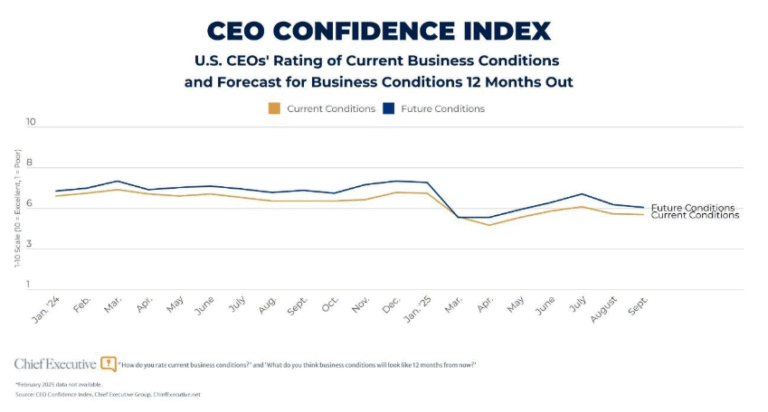
Culture is top of mind as CEOs take decisions about talent retention, return-to-office, and equity (among others.) Major disruptions—with which we are all painfully familiar right now—highlight the impact of culture on a company’s success or failure.
And it’s not just about people. Culture impacts staff and customer behavior. The actions and behaviors of individuals and particularly, company leaders, reflect directly on the organization’s image and reputation. Together, these affect financial performance and company value—both negatively and positively. In fact, James L. Heskett estimates that culture can account for up to half of the differential in corporate performance among like companies.
Navigating through big change—in the external or internal environment—is precisely the time to consider culture.
Not long ago, while discussing strategy with a new CEO (hired from outside the organization), they told me: “I don’t want to change the culture.” My reply: “You already have.” A new person sitting in the CEO’s seat shifts culture. In my experience, denying this reality impedes progress, even with the best of intentions.
Separately, a CHRO described a culture of continuous improvement. While seemingly helpful, the result she described is a never-ending quest for perfection that stifles growth and change. These days, CEOs cite culture among their reasons for taking a return-to-office decision. As in: “We’re an office culture.”
Simply by joining the organization, the new CEO changed the culture. Tracking metrics that perpetuated the myth of perfection slowed progress, even as the CEO set goals to accelerate performance. An “office culture” has little meaning in a virtual, work-from-anywhere world.
Every organization has an inherent culture—a fundamental predisposition that exists with or without the CEO’s direct intervention. Still, CEOs shape company culture by their decisions and actions. Failure to define (or clarify) explicitly the desired cultural norms typically results in a slew of unwritten rules that can impede productivity. It’s up to the CEO to nurture the culture that makes it easier to achieve objectives.
The CEOs I advise have learned that a positive culture can be the glue of the organization— not only to attract and retain talent, but also to get work done. The past—your heritage or legacy—is just one element of culture. It acknowledges past experiences and institutional learning that contributed to the organization’s performance to date.
The business environment is constantly evolving. So, culture must be a flexible glue. What worked or was valued in the past may be neither appropriate nor useful going forward. Culture can be a useful tool to navigate the changes and chart the course for the future. Thus, the key question for CEOs is this: Is the culture you have the one you need?
Too often, culture conversations are rooted in the past. Some of these are well-intentioned. Yet, rather than preserving what they value about the culture, the net effect is to make it harder to achieve objectives.
Cultures that are grounded in the past neglect the other foundational elements of culture— values, image and behaviors. Each one contributes to the organization’s working environment and how the company is perceived. It is also the combination of these four elements that makes cultures unique.
Relying too heavily on the past makes it hard to see where you are now. Worse, it’s nearly impossible to prepare for what’s ahead. Something needs to change.
Forward-thinking conversations about culture acknowledge both what brought you here and what’s changed. They consider the good, the bad, and the ugly of leadership behaviors and actions, and the impact of these on company performance.
In my book, Charting the Course: CEO Tools to Align Strategy and Operations, I liken the elements of culture to pieces in a puzzle. The CEO guides the team to define each element—or shape the piece. They put the pieces together in a way that best supports the future of the business.
1) Think about your vision and what you are trying to achieve. Then assess how well your current culture supports your business objectives.
• In what ways are you living and breathing your culture?
• Does everyone know what happens when results are achieved (or not)?
• How does the leadership team contribute to the reality of your company culture?
• How well do people understand and value the culture you have?
2) Consider what’s happening in your world. The relationship between work and life has changed dramatically; social responsibility and equity are playing stronger roles; and people have more choices about where, how and for whom they’ll work. Getting work done also requires attracting and retaining talent.
• In what ways has the competitive environment impacted your evolution?
• To what extent do your core values reflect changes in generational and societal expectations?
• How do your internal systems of rewards and consequences encourage the behaviors you want?
• What do you do to express your values and culture meaningfully for your staff and customers?
3) Acknowledge your heritage, then move on. Celebrate the aspects that make you proud and accept those that are no longer relevant, needed or valued. Discard allegiance to what won’t contribute to your future.
• What elements of your past will you reinforce for the future?
• How well do you capture and retain the best aspects of your working habits and ideas?
• What needs to change so that the future can be different—and you achieve your objectives?
• How do you convey your proud history and forward-focus to stakeholders? To staff? To customers?
Every organization has a culture. Internal and external perceptions of that culture impact relationships with customers, suppliers, current and prospective employees, and investors. Relationships influence business performance.
The culture you need is the one that best supports the company’s ambition. Rather than allowing history or old habits to dictate the culture, CEOs should be intentional. Discern the culture they need to achieve objectives. Then align their own behaviors to the desired culture and create the structures and systems to support it.




Chief Executive Group exists to improve the performance of U.S. CEOs, senior executives and public-company directors, helping you grow your companies, build your communities and strengthen society. Learn more at chiefexecutivegroup.com.
0

1:00 - 5:00 pm
Over 70% of Executives Surveyed Agree: Many Strategic Planning Efforts Lack Systematic Approach Tips for Enhancing Your Strategic Planning Process
Executives expressed frustration with their current strategic planning process. Issues include:
Steve Rutan and Denise Harrison have put together an afternoon workshop that will provide the tools you need to address these concerns. They have worked with hundreds of executives to develop a systematic approach that will enable your team to make better decisions during strategic planning. Steve and Denise will walk you through exercises for prioritizing your lists and steps that will reset and reinvigorate your process. This will be a hands-on workshop that will enable you to think about your business as you use the tools that are being presented. If you are ready for a Strategic Planning tune-up, select this workshop in your registration form. The additional fee of $695 will be added to your total.

2:00 - 5:00 pm
Female leaders face the same issues all leaders do, but they often face additional challenges too. In this peer session, we will facilitate a discussion of best practices and how to overcome common barriers to help women leaders be more effective within and outside their organizations.
Limited space available.

10:30 - 5:00 pm
General’s Retreat at Hermitage Golf Course
Sponsored by UBS
General’s Retreat, built in 1986 with architect Gary Roger Baird, has been voted the “Best Golf Course in Nashville” and is a “must play” when visiting the Nashville, Tennessee area. With the beautiful setting along the Cumberland River, golfers of all capabilities will thoroughly enjoy the golf, scenery and hospitality.
The golf outing fee includes transportation to and from the hotel, greens/cart fees, use of practice facilities, and boxed lunch. The bus will leave the hotel at 10:30 am for a noon shotgun start and return to the hotel after the cocktail reception following the completion of the round.